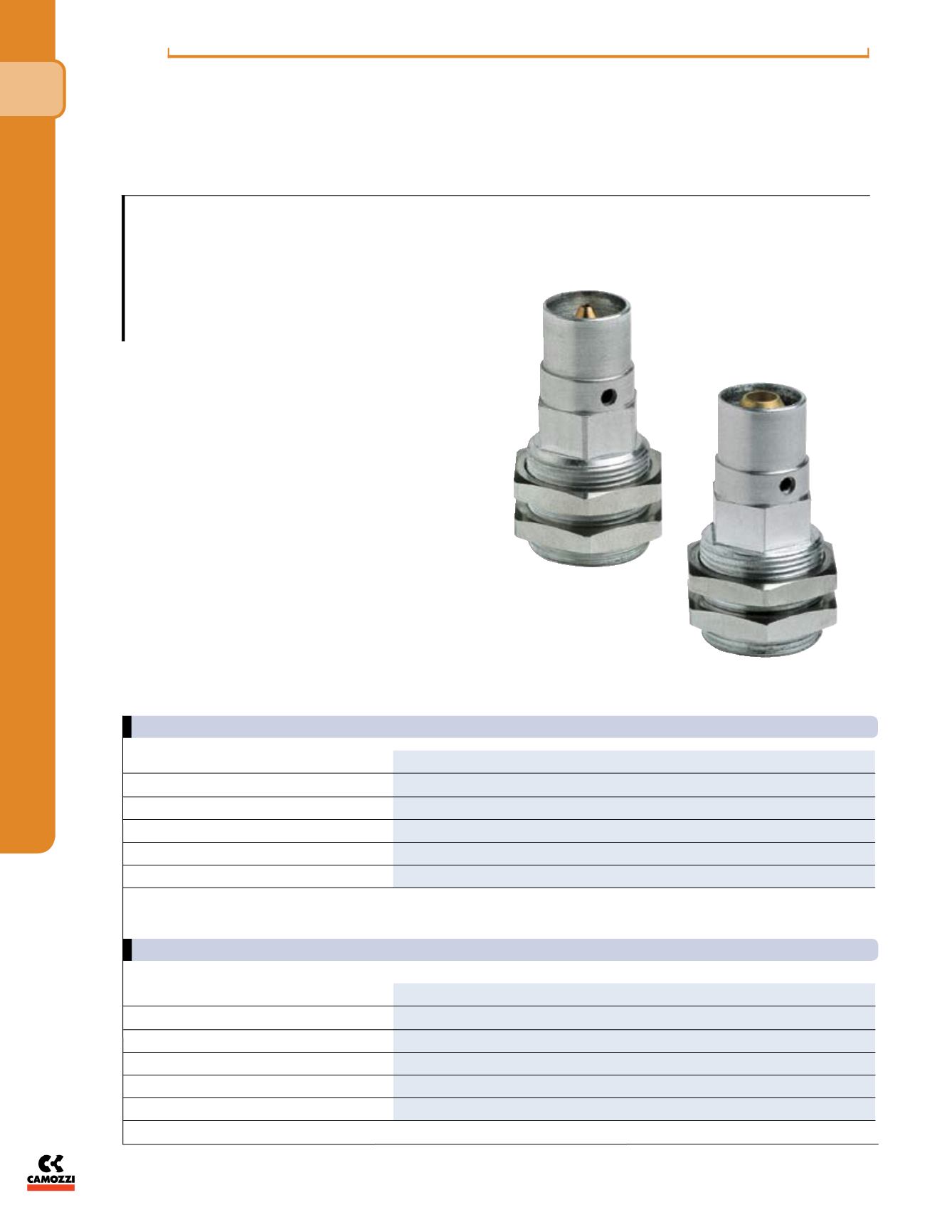

The company reserves the right to vary models and dimensions without notice.
These products are designed for industrial applications and are not suitable for sale to the general public.
52
a i r p i l o t v a l v e s
3
Dimensions in millimeters (mm)
Sender and Receiver Element Series 2L
Mod. 2LB-SE (Sender)
Mod. 2LB-SR (Receiver)
Materials
Anodized - brass
Construction
nozzle without moving parts
Mounting
M22 x 1 threaded body with bulkhead nuts
Installation diameter
22.5 mm
Mounting brackets
B 20-25 (Foot), E 20-25 (Flange)
Ports
M5 (10 - 32 UNF)
TECHNICAL SPECIFICATIONS
Both the sender and receiver should be supplied
with filtered, non-lubricated compressed air.
The sender requires a supply pressure of 0.3
- 2 bar. In the case of the receiver (max 8.7
psi), this is done in order to prevent the danger
of contamination. The air jet from the sender
interrupts the free outflow of the air jet at the
receiver. A back pressure is produced which
generates a control pressure at outlet A of the
receiver. This pressure signal is typically sent
to an amplifier valve. If an object breaks the
air jet between the sender and the receiver, the
signal drops to zero.
The air signal from the receiver element (2LB-
SR) will typically become the input pilot signal
to the amplifier valve (2LA-AM). Receiver
element (2LB-SR) will typically connect its port
2 (or “A”), to the amplifier valve pilot port
12.
Pressure
Sender (2LB-SE): (4.35 - 29 psi) min. 0.3 bar - max. 2 bar
Conditions of functioning
Receiver (2LB-SR): (.6 bar max), 8.7 psi max. PSR ≤ PSE (receiver’s pressure is less or equal to sender’s pressure}
Air consumption
P (2 bar) @ 45 NL/min; P (29 psi) = 1.59 SCFM
Max. distance between sender and receiver
see graph
Temperature
-20°C + 80°C; (-4° - 175° F)
Fluid
filtered air, without lubricant
PNEUMATIC DATA



















